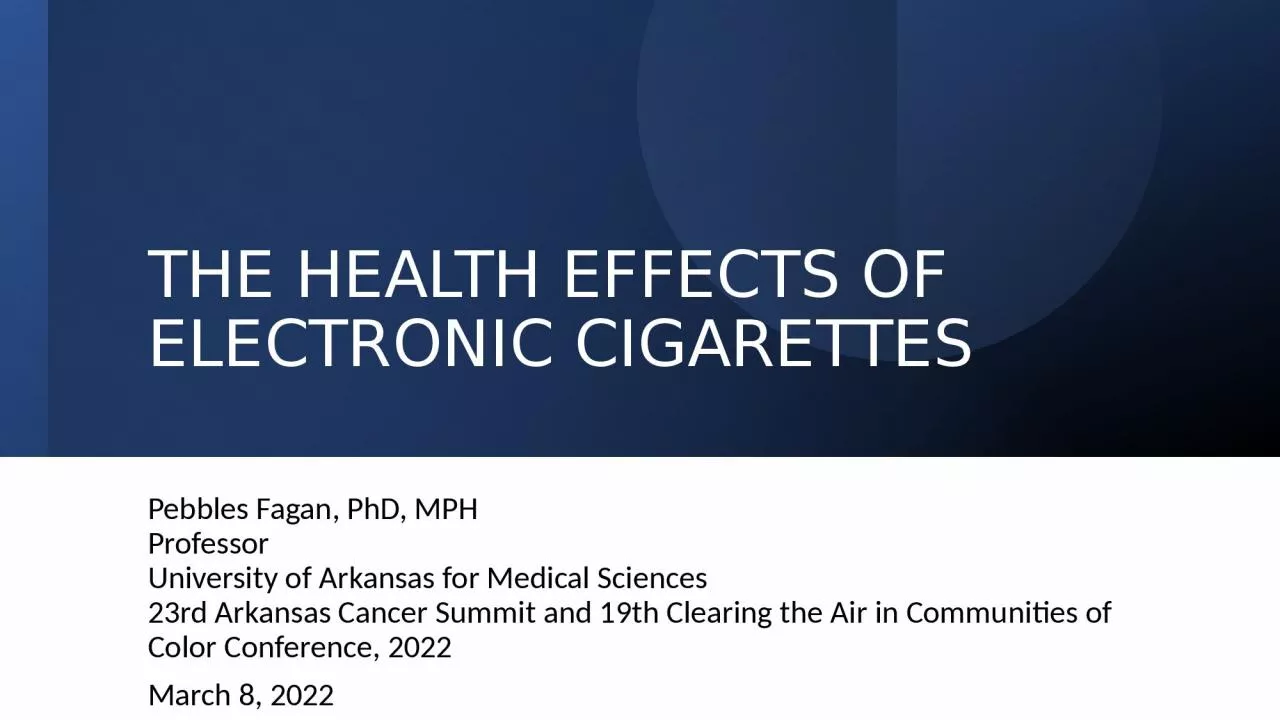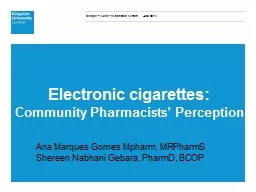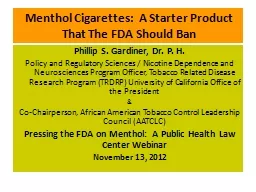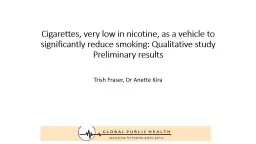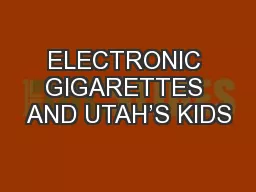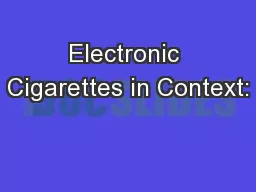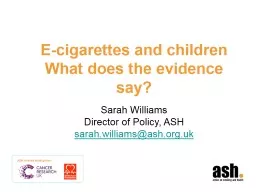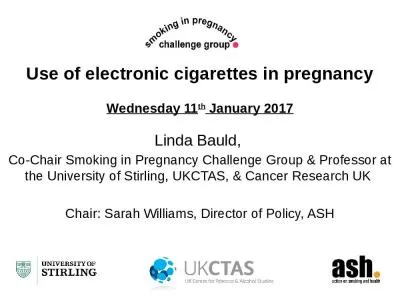PPT-THE HEALTH EFFECTS OF ELECTRONIC CIGARETTES
Author : RockinOut | Published Date : 2022-08-02
Pebbles Fagan PhD MPH Professor University of Arkansas for Medical Sciences 23rd Arkansas Cancer Summit and 19th Clearing the Air in Communities of Color Conference
Presentation Embed Code
Download Presentation
Download Presentation The PPT/PDF document "THE HEALTH EFFECTS OF ELECTRONIC CIGARET..." is the property of its rightful owner. Permission is granted to download and print the materials on this website for personal, non-commercial use only, and to display it on your personal computer provided you do not modify the materials and that you retain all copyright notices contained in the materials. By downloading content from our website, you accept the terms of this agreement.
THE HEALTH EFFECTS OF ELECTRONIC CIGARETTES: Transcript
Download Rules Of Document
"THE HEALTH EFFECTS OF ELECTRONIC CIGARETTES"The content belongs to its owner. You may download and print it for personal use, without modification, and keep all copyright notices. By downloading, you agree to these terms.
Related Documents

